Table of contents
- Active safety systems in motorcycles Which electronic helpers bring security
- Future motorcycle: what’s next?
- opinion poll
- Conclusion
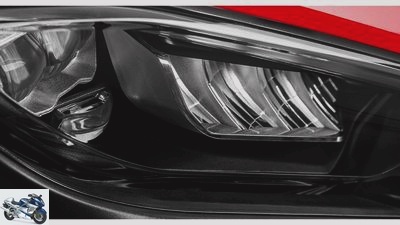
Bosch
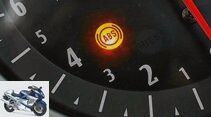


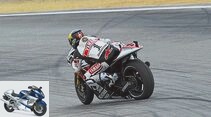
10 pictures

MOTORCYCLE archive
1/10
ABS – Should prevent the wheels from locking when braking hard or on slippery surfaces.
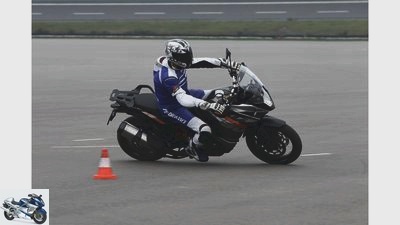
KTM
2/10
“Cornering ABS “- the colloquial name of lean-dependent motorcycle stability systems, MSC for short. Quasi the motorcycle’s ESP.

Markus Jahn
3/10
Traction Control – Like ABS, it also works on the basis of wheel speeds and throttles the engine output if the speed of the rear wheel is too high compared to the front wheel.
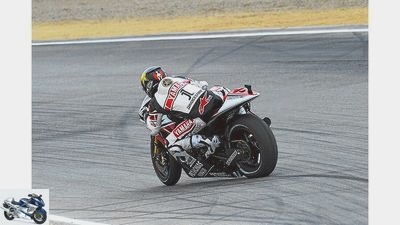
2snap
4/10
Lean angle-dependent traction control – for the optimal regulation of the traction control in a curve, the lean angle calculation via the accelerations is also necessary to avoid a so-called high side.
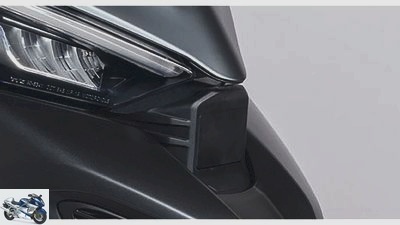
Ducati
5/10
Distance radar – with the latest security systems update. A radar module in the front panel measures the distance to other road users in front and maintains the preset distance.
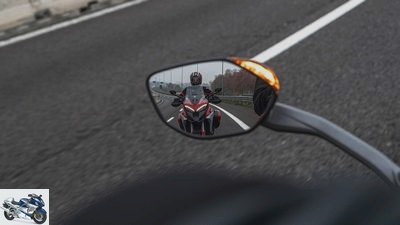
Ducati
6/10
Blind spot warning – Short-wave radar waves are used to monitor the motorcycle’s blind spot in order to indicate possible vehicles that have not been noticed by the driver when changing lanes. Here as a warning in the blinker with an orange light.
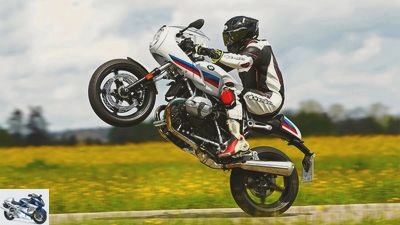
fact
7/10
Anti-wheelie control – the front wheel lift detection is also part of the manufacturer’s very comprehensive MSC systems. At first glance, the AWC acts like a traction control, but works via the rotation rates, i.e. the acceleration sensors.
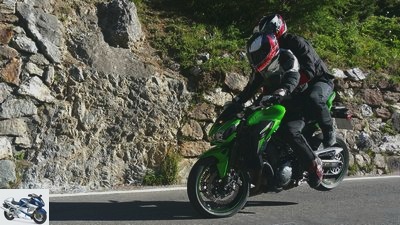
Zep Gori
8/10
Anti-Stoppie-Control – The rear wheel lift detection works during very hard braking maneuvers and limits the brake pressure of the front wheel brakes when the system detects a lift off rear wheel.

Ducati
9/10
Cornering light and adaptive light – seeing and being seen is still an essential safety factor on a motorcycle today. More and more widespread functions such as cornering lights or adaptive systems, which can adjust the light cone and luminosity depending on the incline and speed for optimal illumination of the road, help.
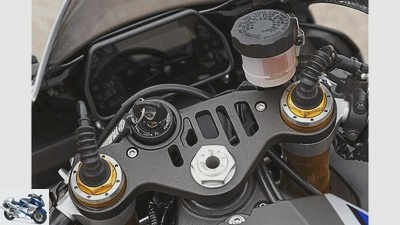
jkuenstle.de
10/10
Semi-active chassis – chassis that can be electronically adjusted or independently preset for different loads and actively react to driving style and surface while driving.
counselor
technology & future
Active safety systems in motorcycles
Active safety systems in motorcycles
Which electronic helpers bring security
Since ABS for motorcycles in 1988, the number and function of active driving safety systems in motorcycles has increased enormously. Everything for our safety.
Jens Kratschmar
01/12/2021
Nothing other than an accident should be avoided by all the electronic helpers, the so-called active driving safety systems. They have been with us since 1988, initially as an option, later in series and since 2016 as a mandatory feature in motorcycles, in the basic form of ABS. Basically all current safety systems are based on its function, which fortunately are increasingly part of the standard equipment even on mid-range bikes.
Here is a list of the functions of the systems available today and possibly available tomorrow, which are either intended to protect us from critical situations or to avoid them altogether.
ABS – anti-lock braking system. Known in motorcycle construction since 1988. Should prevent the wheels from locking when braking hard or on slippery surfaces. ABS has been mandatory for motorcycles over 125 cubic meters since Euro 4. Function via wheel speeds. If one or both wheels stop turning despite the remaining speed, the ABS module opens the hydraulic circuit until the wheel turns again. To be recognized during use by rapid pressure impulses on the hand and foot brake lever.
Distance radar – with the latest update of the security systems. By means of a Radar module in the front panel or Camera systems the distance to other road users in front is measured and the preset distance is maintained. The radar systems can also be combined with the MSC, which also enables the function in an inclined position and thus can also maintain the distance when wagging around bends. The system can also actively initiate braking. However, as things stand today, not to a standstill, as the vehicle manufacturers do not yet have reliable systems and processes to measure how the driver is sitting on the motorcycle. It should be avoided to initiate braking if the driver does not have both hands on the handlebars or is looking elsewhere. That would bring the coming critical situation forward and intensify it. Emergency braking assistants to a standstill are in development. Current example model: BMW R 1250 RT
Anti-stoppy control – The rear wheel lift detection works during very hard braking maneuvers and limits the brake pressure of the front wheel brakes when the system detects a lift off rear wheel. The ASC should ensure that both wheels stay on the ground when braking, thus enabling the shortest possible and most stable braking distance and preventing a rollover. Function via wheel speeds and rotation rates of the motorcycle, i.e. also part of the MSC. Depending on the manufacturer “feels” the handbrake lever looks different. Sometimes it hardens, sometimes it just pulsates stronger. Current example model: Aprilia RS 660
Anti-wheelie control – The front wheel lift detection is also part of the manufacturer’s very comprehensive MSC systems. At first glance, the AWC looks like traction control, but it works via the yaw rates, i.e. the bike’s acceleration sensors. The aim is not to let the front wheel rise excessively when accelerating fully, but not to brake the rear wheel unnecessarily early. Controlled driving with a slightly raised front wheel at full throttle is therefore possible. Current example model: KTM 1290 Super Duke R.
Hill start assist – Starting up on a hill with the artful game of clutch, accelerator and brake is made easier by the hill start aid, which is usually activated in the MSC systems. It recognizes that you are stopping on an incline and applies the foot brake. Only with enough pulling force on the wheel does it come loose again. Current example model: BMW R 1250 GS
Electronic engine brake – In principle works contrary to traction control and is intended to reduce the braking torque of the engine when downshifting. This is done by opening the throttle valve slightly when braking and downshifting at the same time, and is intended to prevent it from rolling or swinging around the vertical axis. In combination with the MSC, it also works in an inclined position. Current example model: KTM 890 Duke
“Cornering ABS” – Colloquial name of lean angle-dependent motorcycle stability systems, MSC for short. Quasi the motorcycle’s ESP, even if it only works when the driver brakes. Calculates the lean angle using the accelerations of the motorcycle and permanently adapts the brake intervention, brake pressure and brake pressure curve. The system can almost completely avoid the sudden righting of the motorcycle when braking in an inclined position. Theoretically able to intervene independently, but not yet available. Probably in combination with upcoming emergency braking systems. Current example model: Yamaha Tracer 9 GT
Cornering light and adaptive light – Seeing and being seen is still an essential safety factor on a motorcycle today. This is where ever more widespread functions such as cornering lights or adaptive systems, which can adjust the light cone and luminosity depending on the incline and speed, for optimal illumination of the road, help. Either rotating mirrors in the headlights, rotating projectors or switchable LED segments are used. The headlight range can be controlled by speed and radar or light-sensitive sensors in order to detect oncoming traffic and not to dazzle. Current example model:Triumph Tiger 1200 XCa
Lean angle-dependent traction control – For the optimal regulation of the traction control in a curve, it is also necessary to calculate the lean angle using the accelerations. If there is too much slip on the rear wheel, the control intervention is calculated differently, which allows the traction control to take effect earlier and the control interventions to be made more gentle, to avoid a so-called high-side. Like cornering ABS, the lean angle-dependent traction control has already been tried and tested to such an extent that it intervenes well before the wheel slips and thus prevents instability when leaning. Current example model: Kawasaki ZX-10 RR
Semi-active landing gear – Chassis that can be electronically adjusted or independently preset for different loads and actively react to driving style and surface while driving. For this purpose, the compression speed is measured in the millisecond range and the damping behavior is adjusted at lightning speed. This prevents unrest when braking with a high payload and prevents incorrect settings of rebound and preload before you set off. Current example model: Aprilia Tuono V4 1100 Factory
Traction control – Like ABS, it also works on the basis of wheel speeds and throttles the engine output if the speed of the rear wheel is too high compared to the front wheel. In the case of a spinning rear wheel, it is the same as if the front wheel were in the air and spinning more slowly. Traction control is also a very simple type of wheelie control.
Blind spot warning – Even with short-wave radar waves, cameras or lidar (like radar only with laser beams) the motorcycle blind spots monitored in order to indicate possible vehicles that were previously unnoticed by the driver when changing lanes. Current example model: Ducati Multistrada 1200 V4
Future motorcycle: what’s next?
Basically, the current driving aids in motorcycles are very similar to those in cars of past generations of technology. Accordingly, a look at the current safety technologies in four-wheelers is also an outlook on similar systems in motorcycles. So for tomorrow we will talk about emergency braking assistants for collision avoidance, overtaking assistants, parking assistants and of course about them V2X or C-ITS networking of vehicles. And of course: Autonomous driving as the sum of all known, current and future technologies
opinion poll
Voted 1619 times
Connected motorcycles make traffic safer?
Yes, in any case.
No, no system can help without consideration for others.
read more
Conclusion
Today we brake better thanks to the computer helpers, tomorrow we drive more relaxed thanks to the electronics and the day after tomorrow the mopeds may be driving the house route alone. So tomorrow I’ll go with you.
Related articles
-
Driver assistance systems for motorcycles
Hirano Ami counselor Driving experience & Driving tips Driver assistance systems for motorcycles Assistance systems For comfort and security Motorcycles…
-
Electronic driver assistance systems for motorcycles
Yamaha 35 pictures www.factstudio.de 1/35 How things are going? It was a long way from the almost purely mechanical cockpit of the Yamaha SR 500 to the…
-
New Bosch motorcycle safety systems
Bosch 17th pictures Bosch 1/17 To make motorcycling even safer, Bosch is developing numerous new assistance systems. Bosch 2/17 Motorcycles should learn…
-
Additional safety through assistance systems
Security campaign Consideration has right of way Yixin Chen 7th pictures Yixin Chen 1/7 Bosch 2/7 Adaptive Cruise Control adapts the speed to the flow of…
-
KTM counselor technology & future Ducati KTM safety systems Ducati and KTM safety systems Front and rear radar ready for series production by 2020 Ducati…
-
Bosch counselor technology & future eCall systems for motorcycles eCall systems for motorcycles Challenges in accident detection and emergency calls A…
-
Motorcycles are networked for more safety
CMC 17th pictures 1/17 This is how the warning of an upcoming construction site that was previously not visible on the curve could look like. The key to…
-
Motorcycle anti-lock braking systems in a comparison test
Jahn 13th pictures Jahn 1/13 The relations shift on the wet test track – in the truest sense of the word. Jahn 2/13 In conclusion, it can be said that…
-
Second-hand advice for beginners 48 hp motorcycles
Horny 21 pictures Horny 1/21 Thanks to the new driving license regulations, entry into the motorcycle world has become even more attractive. And on the…
-
Motorcycles with cornering ABS in comparison
Photo: fact 28 pictures archive 1/28 BMW took on the pioneering role when it came to the spread of ABS in motorcycles. The following models want to show…